The journal (book) of the cashier-operator is a type of documentation that must be maintained for each cash register in the organization. At the same time, it is important not only to register and issue it correctly, but also to enter daily entries in this accounting book according to the established pattern without corrections. Let's analyze all the current requirements for the cashier's journal for 2016-2017.
Definition and role of the journal
Another name for the cashier's book is the KM-4 form. It is obligatory from 25.12.1998 according to the Decree No. 132 of the State Statistics Committee. For each apparatus) one such summary document is required. Keeping this journal is the responsibility of the teller, cashier who serves customers with the help of cash registers and accepts cash from the latter as payment for products, services, work, etc. This book is the primary accounting documentation for the accounting of incoming funds.
In KM-4, the readings taken from the cash register and the amounts of money that have passed through the cash register are recorded daily. At the beginning and end of the day, the employee writes down the readings of the KKM meters (the so-called Z-report) into it - the difference between them will be considered the revenue for the current day. The main role of the cashier's journal is to reconcile the actual balance of money in the cash register with what the cash machine counted.
The need for mandatory maintenance of the KM-4 form is indicated by the letter of the Ministry of Finance No. 104 (08.30.1993) and the letter of the Federal Tax Service No. ED-4-2 / [email protected] (23.06.2014).
Rules for registration and filling
When registering a cashier-operator journal, it is important to pay attention to the following details:
- KM-4 is mandatory to flash the entire book or only sheets.
- The signature on the control sheet must be in the hands of the individual entrepreneur or the head of the organization. It must be certified by a seal, if the latter is used by the institution.
- In the book, each sheet must be numbered, starting with the first. Pages do not need to be numbered.
- On the last sheet, a note is obligatory: “The journal numbered, laced and sealed with a signature (and seal) ... sheets.” Part of this text must go on the control sheet.
How to fill out the journal of the cashier-operator correctly (you will see a sample of a specific entry below)? The rules are as follows:
- You can write in the book only with a ballpoint or ink pen with dark blue ink.
- Entries are made in strict chronological order. One line is one cash day.
- The source for the records is only the Z-report - the information should not be the result of independent calculations. If several such reports were taken during the cash day, then data on each of them must be entered in the book.
- Each entry must be certified by the signature of the cashier, individual entrepreneur and manager.
- The book should not contain corrections and blots.

If there is an error in the work of the cashier-operator in an already made entry, you can correct it by following the instructions below:
- Erroneous data must be crossed out, then indicate the correct information next to it, as well as the date of correction.
- The cashier himself, as well as his immediate supervisor, certifies the blot with his signature.
- If the scale of the error is measured by several pages or sheets, then they can be crossed out crosswise.
If all blots are corrected according to the specified scheme, then they should not be punishable for the employee.
Title page requirements
The title page of the journal of the cashier-operator must be drawn up as follows before the direct presentation of the book to the tax office:
- The full name of the institution, its address should be written at the top.
- Further - information about KKM - brand, type, model. On the right side - the manufacturer's number and registration number, which is reported by the TsTO or tax inspector when registering the device.
- Be sure to indicate when the filling of the book was started, and subsequently - when the last entry was made.
- It is necessary to indicate the position and full name of the responsible person - a cashier working under an employment contract.

Replacing the KM-4 form
Before starting work, the book of the operator must be registered with the Federal Tax Service. By this time, it should already have a completed title page, pagination, an entry on the last page that affects the control sheet, be stitched.
A new journal should be started only when the old one is completely filled (each form is designed for 1000 entries). The reason for the replacement may also be the obvious dilapidation of the book or its significant damage.

Columns of the journal KM-4 and their meaning, verification formulas
Speaking about how to correctly fill out the journal of the cashier-operator, a sample of which you have already seen in the photo, we will analyze all the columns that exist in it, revealing their meaning.
| Count | Name | Entered information |
| 1 | Change date | Enter the date printed in the check - Z-report |
| 2 | Department number | The column is filled in if there is a division into sections within the organization |
| 3 | Name of responsible person | If the journal is maintained by the same cashier, then it is permissible to indicate the full name in the initial line, and in subsequent lines put dashes (--//--) |
| 4 | Column of the serial number of the control counter at the end of the shift | The ordinal number of the Z-report is recorded - this information is visible in it |
| 5 | Fiscal memory report (control meter), registering the sum of transfers of readings of the summing meter | Some cashiers write down the number of sales per day here, some duplicate the information from column 4. Most advise leaving this section blank |
| 6 | Indications of summing counters at the beginning of the day | Non-resettable total of the end of the previous shift (yesterday's Z-report) - matches the data in column 9 of the previous entry |
| 7 | Cashier's signature | |
| 8 | Administrator Signature | |
| 9 | Totalizer data at the end of the shift | Non-resettable total at the end of the working day |
| 10 | Amount of daily income | Specified in the Z-report. To check it, you can calculate it like this: column 9 - column 6 \u003d column 10 |
| 11 | Surrendered cash | Amounts of cash given by the teller to the main cash vault. You can check the correctness of the calculations using the formula: column 10 - column 13 - column 15 = column 11 |
| 12 | Paid according to documentation, pcs. | This records the number of products whose purchase was paid for by cards, etc. |
| 13 | Paid according to documents, rub. | Amount of purchases from column 12 |
| 14 | Rented total rubles | The entire amount of money handed over to the chief teller is indicated - both cash and non-cash. If there were no erroneously issued checks, return of goods, then the data from here are equal to column 10 |
| 15 | Amounts returned to customers on unused KKM checks | Erroneously punched checks, return of goods must also be entered in the KM-3 form |
| 16 | Signatures at the end of the cashier's shift, administrator, leader | Columns 17 and 18 may be signed with one hand |
| 17 | ||
| 18 |
Consider filling the log on a specific example.

How to fill out the register of the cashier-operator: sample
Suppose, at the closing of the shift on May 10, 2017, the cashier removed report No. 3210. According to it, the daily revenue amounted to 23845.12 rubles. The non-resettable total was 50645.20 rubles. His figures for yesterday - 26800.08 rubles. The goods were returned in the amount of 2114.50 rubles. We will enter the information in KM-4.
| Column number | Information |
| 1 | 10.05.2017 |
| 2 | --- |
| 3 | Ivanova A.A. |
| 4 | 3210 |
| 5 | --- |
| 6 | 26800.08 |
| 7 | (Signature) |
| 8 | (Signature) |
| 9 | 50645.20 |
| 10 | 23845.12 (50645.20 - 26800.08) |
| 11 | 21730.62 (23845.12 - 2114.50) |
| 12 | --- |
| 13 | --- |
| 14 | 21730.62 |
| 15 | 2114.50 |
| 16 | (Signature) |
| 17 | (Signature) |
| 18 | (Signature) |
Return and storage of funds
How to fill out the journal of the cashier-operator? The sample demonstrates the return of goods to consumers. Such situations, in addition to being entered in KM-4, must be entered in KM-3. The return occurs through the organization's main cash desk, less often through the KMM of a certain operator.

All cash stored in the cash drawer must be handed over at the end of the shift to the immediate supervisor, individual entrepreneur or central cash desk. The operator does not have the right to dispose of these amounts after making an entry in the journal.
Acquiring
Acquiring is a cashless payment using bank cards. This relatively recent innovation sometimes confuses when filling out the teller's journal - the daily revenue column includes a larger amount than what is stored at the cash desk. In addition, the employee must keep a record of consumers (keep their copies of receipts for himself) who paid by bank transfer.

How to fill out the journal of the cashier-operator correctly, the samples in this article clearly showed. This book is one of the most important documents in the conduct of settlement and cash activities. Its absence, just like its loss, entails fines imposed by the inspection bodies of the IFTS, both on the employee and the organization.

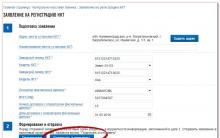
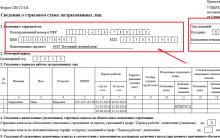
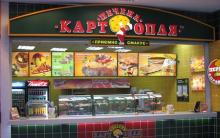
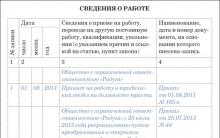
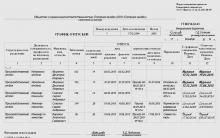





How to issue a power of attorney to represent the interests of an LLC to an individual?
How to apply for an IP: step by step instructions
Form of power of attorney to receive goods or material assets
The deadline for registering an individual entrepreneur in the tax
Business plan for a law firm: an example with calculations legal support for a business